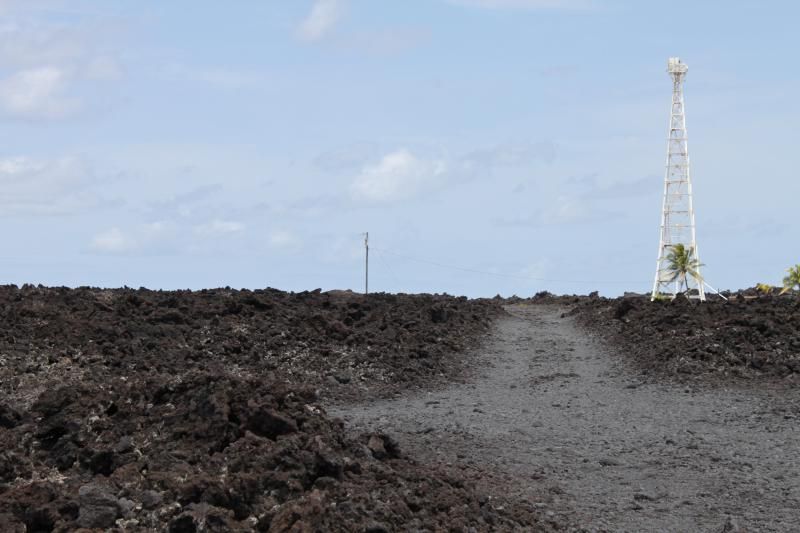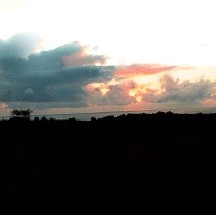Digital Collections
Celebrating the breadth and depth of Hawaiian knowledge. Amplifying Pacific voices of resiliency and hope. Recording the wisdom of past and present to help shape our future.
Kīhei de Silva
Haku mele: Unknown. Thought to have been composed in the late 19th century.
Sources: Kawai Cockett.
Kimo Keaulana, Puke Mele, 56, and MS Grp 329, 4.29, Bishop Museum Archives.
Discography: This song is not to be confused with the "Kumukahi" sung by Tina Ka‘apana and Gary Haleamau and credited to J. Kaua and G. McBride. Hawaiian Quintette, "Kumukahi (Song of the Lonesome Forest)," Victor 65349 (as listed in Hawaiian Music and Musicians, 479) or 18578A (as given by Harry Soria, Jr.). I have not heard this 78 rpm recording and am unaware of its content. To the best of my knowledge, then, the "Aia i Kumukahi" that Kawai Cockett sings has yet to be recorded. The song’s melody, however, is easily recognized as a lively version of "Hole Waimea."
Text below: As sung by Kawai Cockett and published by Kimo Alama-Keaulana. Translation: Kīhei de Silva.
Aia i Kumukahi ka lā i luna o ka lani
I laila huki hou (i) ka ulua
E ‘imi ana paha i kona pili
I ka piko holuholu o Waiākea.
Pulu au ma‘e‘ele i ka ua lā
Kilikilihune i ka nahele lā
Ho‘opulu ana i ka palai.
Pulu au ma‘e‘ele i ka ua lā
Kilikilihune i ka nahele lā
Ho‘opulu ana i ka palai.
The sun is up in the sky at Kumukahi
There I hook the ulua once more
Perhaps he is searching for his partner
At the swaying piko of Waiākea.
I am soaked, thrilled by the rain
Misting lightly in the forest
Moistening the ferns.
I am drenched, love-smitten in the rain
Falling lightly in the forest
Soaking the ferns.
The morning sun first touches Hawai‘i at Cape Kumukahi, the easternmost point of the island chain. Because of its location and literal meaning ("first beginning, origin"), Kumukahi frequently appears in older mele as a symbol of the fresh start and proper sequence of action so necessary to the success of human endeavor. Thus, in the traditional processional chants "Ho‘opuka e ka Lā ma ka Hikina" and "Hiki mai ka Lā ma ka Hikina," Kumukahi serves as the eastern gateway through which sun and dancer pass on a journey that "floods the earth with light and brings forth vitality to all [they touch]" (Kawena Pukui, "Hulas of Kaua‘i," Bishop Museum Archives HI.M.72:5). In Queen Emma’s travel chant "He Ui a he Nīnau kēia na Hōpoe Wahine i Hāʻena," Kūki‘i Heiau at Kumukahi serves as Emma’s figurative entry-point on a Puna "homecoming" visit that is not so much geographical as spiritual. And in high chiefess Manono’s second paukū to the mele now known as "‘O Kona Kai ‘Ōpua i ka Laʻi," the activity of the sun at Kumukahi (it enters Puna through the passageway marked by the stones Ha‘eha‘e and Makanoni) becomes a metaphor of Manono’s introduction to complete, fulfilling love.
The tenor of the more modern "Aia i Kumukahi" is considerably less serious than these older pieces. Our hīmeni style composition (the hīmeni structure is characterized by a four-line verse and chorus as opposed to the two-line, no-chorus, haʻina-ending structure of the hula kuʻi; hīmeni were meant to be sung, hula kuʻi to be danced, but many hīmeni—including "Kumukahi"—have, in fact, been adapted to hula) makes use of the "fresh start" connotations of Kumukahi to describe a woman’s successful rekindling of passion in a lover who had found other interests. Although this mele ostensibly describes a fishing trip to Cape Kumukahi, the figurative meanings of ulua, piko, kilihune, and kapalai are indicative of a lover’s assignation. Once we understand that the ulua represents a male sweetheart and that the mist-laden palai fern is a favorite symbol of female passion, then the song’s kaona opens itself readily to steamy interpretation. Our woman goes to Kumukahi and catches again (huki hou) her ulua. He is there on another mission—looking to join with his new sweetheart in the "swaying piko of Waiākea"—but our narrator apparently has the superior bait and technique. The man is hooked, yanked from his original course, and deposited in the misty fern forests of her love.
"Aia i Kumukahi" shares with several songs in this collection ("Ka Nani aʻo Hilo," "Piukeona," and "Ka Manu") a penchant for image-hopping that is, in fact, characteristic of many late 19th and early 20th century mele. "Kumukahi" begins with ʻulua fishing, jumps to inland piko-searching, and ends with a fern-soaking rain. "Ka Nani aʻo Hilo" skips merrily from rain to chicken-skin to bird to flower vase to fish net. The parade of images in "Piukeona" includes an artificial limb, a lehua blossom, a Mexican banana, a bit of magnetized steel, acids, telephone wires, a furrowed hill, a deep valley, and a cock’s comb. "Ka Manu," after three verses of well-developed lehua imagery, takes us quickly from ship’s captain to bird feathers, and then concludes with a catalog of geographically disconnected place-names: Nihoa, Kāne‘ohe, and Pohoiki. These are serious, red-pen offenses to those teachers and critics of western poetry for whom well-developed imagery is a virtue and mixed metaphor is a sin. Songs like "Aia i Kumukahi" suggest that 19th century haku mele did not adhere to this western literary value: they and their audience took great delight in a multitude of images, however unconnected or fleeting. Much of their delight, I would guess, derived from making and discovering the connections between the seemingly disparate and brief.
"Aia i Kumukahi" shares its melody with "Hole Waimea" (first put to music before 1877 by Prince Leleiōhōkū) and "Lanakila I‘aukea" (an Ernest Ka‘ai composition of the early 20th century). Although the practice of tune-borrowing is an affront to Western standards of originality, the Hawaiian of the last century saw it as a compliment to the actual composer and as a matter of ultimately little consequence: words meant everything; music meant little.

photo credit: Eli Duke, Wikimedia Commons
Ka Hale Ipukukui ʻo Kumukahi, Puna, Hawaiʻi. Built in the 1930s and manned by Joe Pestrella, the lighthouse has been automated since Pestralla’s quarters were destroyed in early 1960 by the same east rift-zone eruption that engulfed the nearby town of Kapoho.

photo credit: Kaleikipiʻoema Brown
Sunrise at Cape Kumukahi, an event that hula people have celebrated for centuries with the hula kaʻi that begins: “Hoʻopuka e ka lā ma ka hikina / Me ka huakaʻi hele no Kumukahi. – Let the sun rise in the east / Forth it goes on its journey to Kumukahi.” A lesser known chant for Kamehameha II, “Kolo Māpu Leʻa i ke Ahiahi,” names two large stones once found at Kumukahi: “Ka hikina o ka lā i Haʻehaʻe…/ Hoʻopūnana hoʻi i Makanoni – The entrance of the sun at Haʻehaʻe / Making its nest, too, at Makanoni.” These stones defined the northern and southern extremes (the summer and winter solstices) of the sun’s entry point on the horizon over the course of a year, Haʻehaʻe on the north and Makanoni on the south. Legend tells us that Kumukahi was a migratory hero from Kahiki; Haʻehaʻe was his wife and Makanoni, her sister. The sisters are no longer visible at Kumukahi; they were perhaps covered over by the Kapoho eruption of January–February 1960.